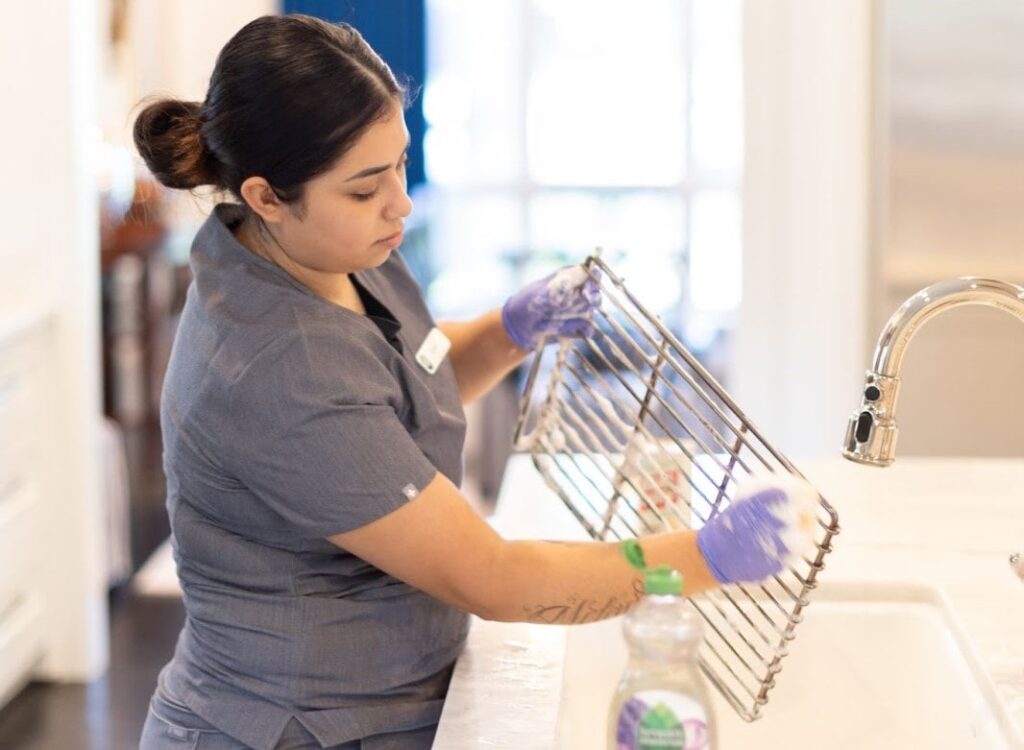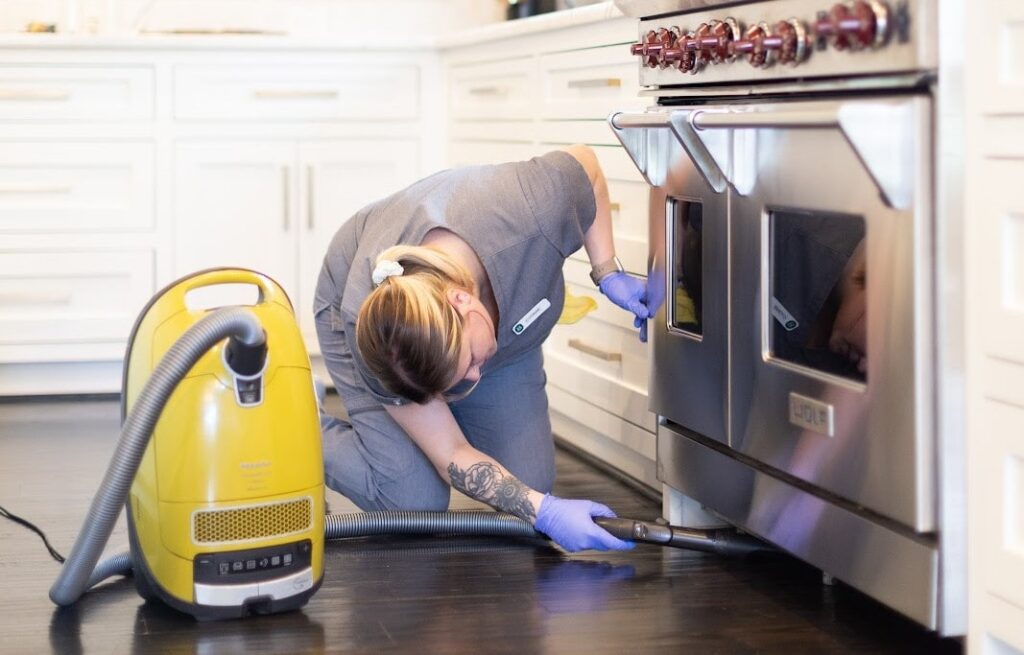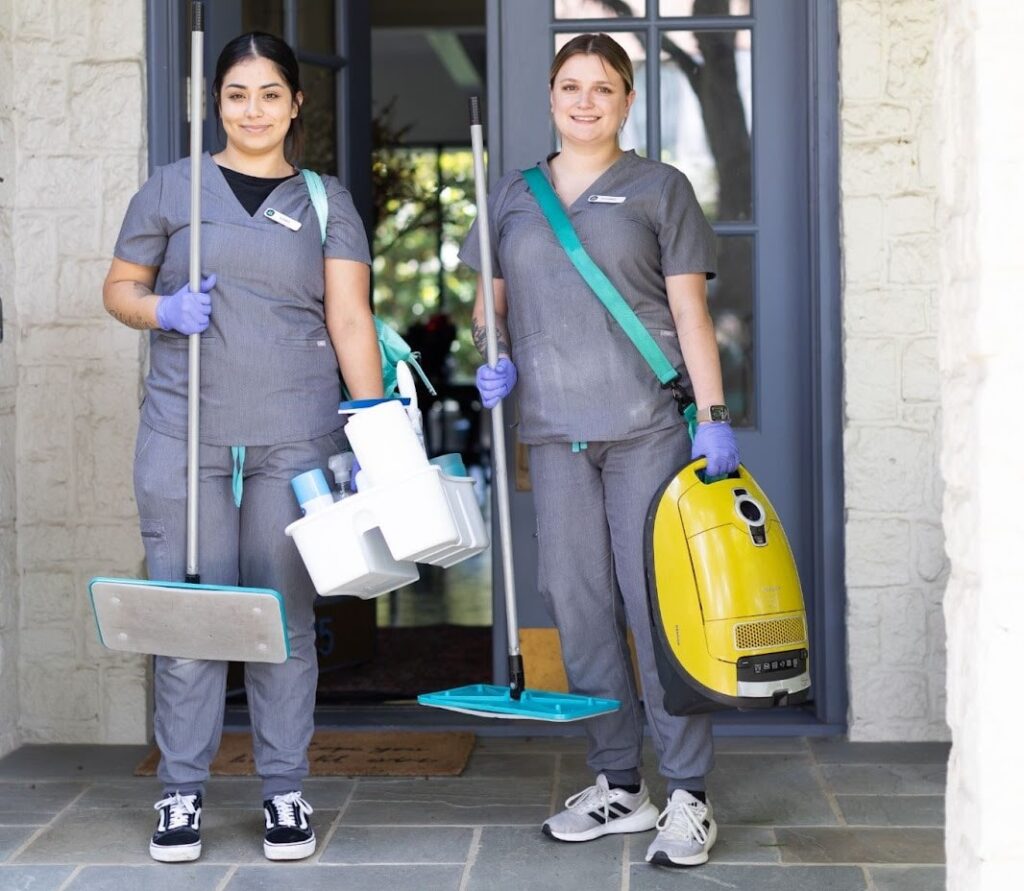Are your floors sticky even after cleaning? Do you feel like how much you scrub and mop, your floors will forever be unclean? Don’t worry, we are here to help you. We will walk you through why your floors are sticky even after mopping and how to get rid of them, once and for all.
Understanding Sticky Floors: Causes and Myths
First thing first, you need to know what makes your floors sticky. Some common reasons include:
Excessive use of cleaning products: This leaves residue on your floors creating a sticky later.
Rinsing improperly: Not rinsing your mops in between two rounds of mops can also lead to sticky residue.
Dirty Mop Water: Using dirty water spreads grime instead of removing it. Always mop with clean water for effective results.
No pre-cleaning: Not sweeping away dirt and debris from the floor before mopping leads to them getting spread over the floor while mopping.
Use of hot water to clean stains: Hot water can affect the dye in carpets and leave residue on the floor. Use lukewarm or cold water instead of hot water to get rid of these stains.

The Role of Cleaning Solutions in Floor Stickiness
Cleaning solutions matter a lot when it comes to fighting sticky floors. Various products interact differently with your floor’s material, so remember to make informed decisions. Chemical cleaners may work well, but overusing them can leave sticky residues. Try to use eco-friendly products without harsh chemicals. If you are using heavy chemical products, dilute them as per the instructions on the label.
Your go-to DIY cleaning solution is a perfect mixture of baking soda, liquid dishwashing soap, white vinegar, and a small quantity of warm water. When it comes to clean floors, the fewer the products, the better the results. So go easy on cleaning supplies. What you need instead is proper cleaning techniques.
The Importance of Proper Mopping Technique
Proper mopping techniques are essential for achieving clean, streak-free floors. Follow these steps to ensure your floors shine without any tacky aftermath:
Sweep or Vacuum Before Mopping: Always start by removing dust and debris from the floor. Skipping this step can lead to dirt mixing with the mop water, making the floor sticky instead of clean.
Rinse the Floor Thoroughly: After mopping with a cleaning solution, go over the floor with a mop dipped in plain water. This removes any leftover cleaner, preventing stickiness and ensuring a streak-free finish.
Wring the Mop Properly: Avoid over-wetting your floors by thoroughly wringing out your mop before each pass. Excess water can leave streaks and damage your flooring, especially if it is wood.
Drying the floor: Use microfiber cloths to dry the wet floor. Air drying is another way if your place is properly ventilated. It helps in quick drying.
Floor-Specific Cleaning Tips

Different types of floor materials need different care. Here are some dos and don’ts:
Hardwood Floors: Water residue damages wood. So make sure to dry the floor after mopping. Also, keep your hardwood away from harsh chemicals as they damage the finish. Non-toxic products from Branch Basics are a better alternative.
Tiles and Grout: To remove sticky residue from the grout, apply a paste of baking soda and water, and gently scrub with a toothbrush. Tiles generally hold onto cleaning products. So rinse thoroughly and dry immediately to avoid watermarks.
Laminate: Laminate is a moisture-sensitive floor type. So use minimal water, like a slightly damp cloth to make it shine. Spray a laminate-safe cleaner like Sprayway cleaner onto a microfiber pad.
Vinyl: Vinyl floors require regular sweeping to prevent dirt and grit from embedding in the surface. Clean them with warm water and a mild soap solution using a soft mop. Avoid abrasive scrubbers or harsh chemicals to maintain their smooth, shiny finish.
Natural stones: Natural stones – Marble, Granite, and Slate – demand gentle care with pH-neutral cleaners, as acidic solutions like vinegar can etch the surface. Use a soft cloth or mop to avoid scratching. Periodically seal the stone to protect it from stains and moisture damage.
Concrete: For sealed concrete, use a neutral pH cleaner and a damp mop. Avoid acidic or abrasive cleaners that can strip the sealant. Unsealed concrete may require periodic resealing to maintain durability.
When to Seek Professional Cleaning Help
Still got sticky floors? Then it’s time for you to call the experts. You probably have some buildup that requires expert knowledge and professional tools. In other words, you need help from Vella’s professional housekeepers.
We handle all types of flooring — hardwood, tile, or laminate — using eco-friendly, non-toxic products. Let our experts bring back the shine to your floors while you relax. Schedule a session with us today!


